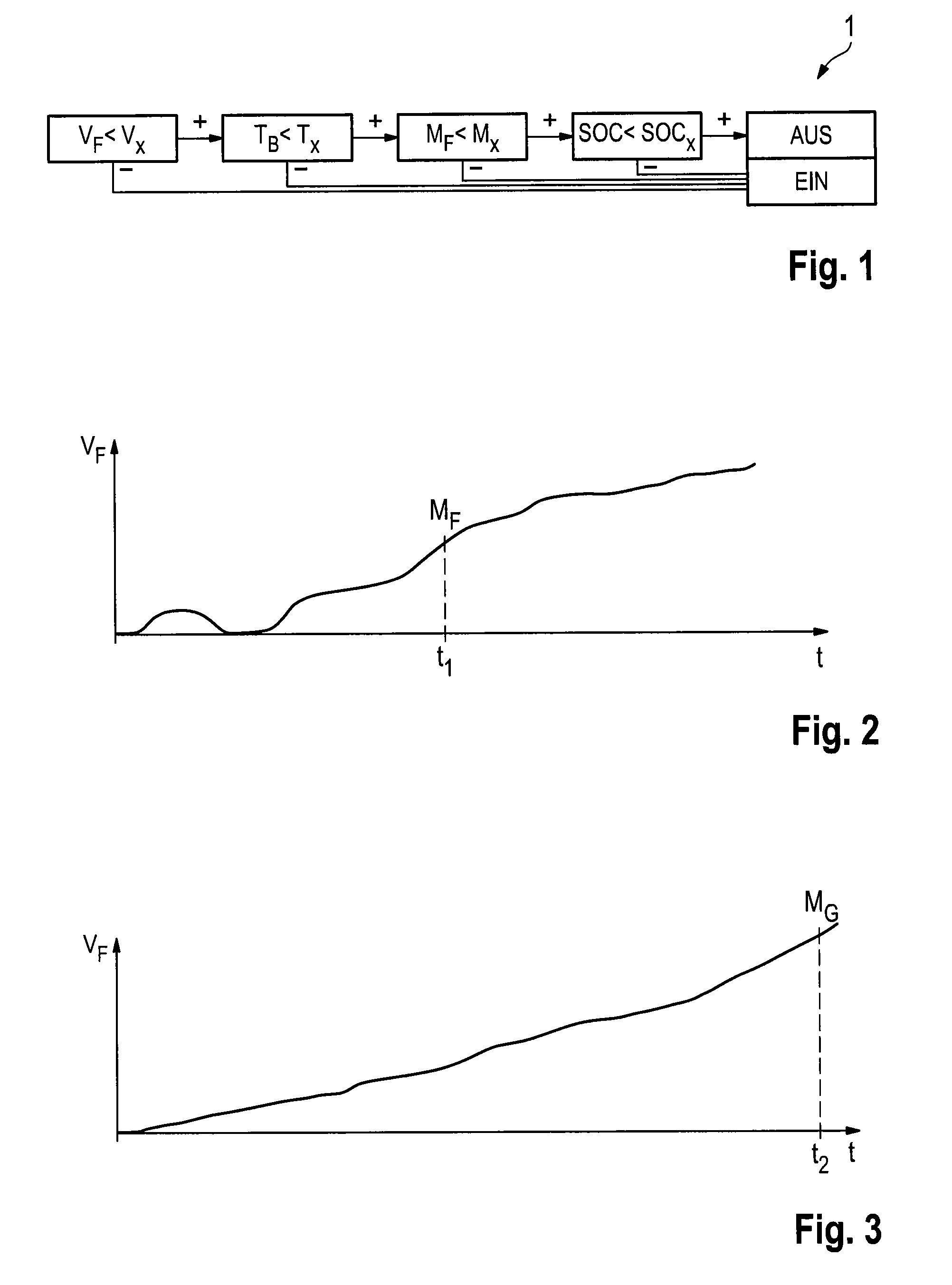[0009]The present invention involves the general idea of operating a
hybrid vehicle with an
electric motor and an internal
combustion engine exclusively in a purely electric-motor mode after a
cold start or after a warm start if a series of criteria for this are met. These criteria are, for example, that a velocity drops below a predefined value, that a temperature of a vehicle battery drops below a predefined value, that a driver's request torque drops below a predefined value and / or the activation of an accelerator pedal drops below a predefined value, and that a predefined
state of charge of the vehicle battery is exceeded. The definition of these four criteria therefore permits the
hybrid vehicle to be started in a purely electric-motor mode, which significantly improves, in particular, specific driving situations such as, for example, driving out of an underground parking garage, in terms of emissions of pollutants. Furthermore, the operating method according to aspects of the invention also improves the start of a journey within a
residential area since this can now be carried out, in contrast to previous hybrid vehicles, in a purely electric-motor mode and therefore comparatively quietly. As a result, in particular it is possible to allow also for an increased requirement for quiet within residential areas, and the driving experience in the electric-motor mode in a
hybrid vehicle can be improved.
[0011]The limiting value for the temperature of the vehicle battery is expediently approximately 40° C. This can ensure that the hybrid vehicle is driven in a purely electric-motor mode exclusively when the vehicle battery has a temperature of at maximum 40°, as a result of which a further rise in the temperature of the vehicle battery, due to the electric driving state, is restricted to a bearable level, specifically, for example, the abovementioned 40° C. This can reliably rule out overheating and therefore overloading of the vehicle battery.
[0012]In a further advantageous embodiment of the solution according to aspects of the invention, the limiting value for the
state of charge of the vehicle battery is approximately 45%. The hybrid vehicle therefore in turn starts in a purely electric-motor mode exclusively when the state of charge of the vehicle battery exceeds the predefined limiting value, that is to say, for example is at least 45%, that is to say approximately half. As a result, excessive discharging of the vehicle battery and the associated restrictions are to be reliably avoided. If the state of charge of the vehicle battery therefore drops below 45% of a fully charged state, the hybrid vehicle cannot be operated exclusively in electric-motor mode or in the purely electric-motor mode, the internal combustion engine is then started in order, on the one hand, to charge the vehicle battery by means of a generator, for example the
dynamo, and, on the other hand, to take over or assist the drive of the vehicle. The threshold of approximately 45% therefore reliably avoids the hybrid vehicle starting in a purely electric-motor mode when the vehicle battery is too weak, as a result of which, in particular, complete discharging is prevented and therefore reliable starting of the internal combustion engine is ensured.
[0014]In a further advantageous embodiment of the solution according to aspects of the invention, the drive in the purely electric-motor mode is terminated if, for example, a vehicle door, in particular the driver's door, or a hood, in particular an engine hood, are opened. Similarly, the drive in the purely electric-
motor drive can be terminated if, for example, a seatbelt, in particular the driver's seatbelt, is opened. These
peripheral conditions for terminating the drive in the purely electric-motor mode serve exclusively to improve the safety of the persons traveling in the hybrid vehicle.
 Login to View More
Login to View More  Login to View More
Login to View More 

